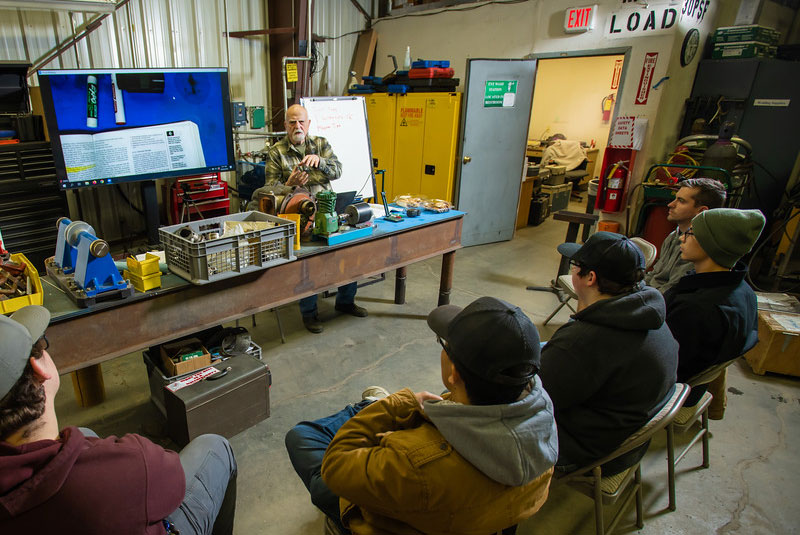PWSC Students Participate in Invasive Species Field Activity with U.S. Fish and Wildlife Service
by V. Heisser |
Valdez, Alaska – September 23, 2025– Prince William Sound College (PWSC) students
recently participated in a hands-on field activity with Dr. Kim Holzer, Regional Invasive
Species Coordinator for the U.S. Fish and Wildlife Service focused on early detection of invasive species in Prince William Sound.
Students learned to identify invasive species that could threaten the region, including zebra and quagga mussels, European black slugs, and Norway rats, while gaining practical experience with monitoring techniques used by resource managers statewide.
The students were divided into three teams:
Team Mussels collected calcium and plankton samples at Ruth Pond, using the University of Alaska Anchorage decision support tool or Lake Vulnerability Web Map to assess the pond’s suitability for invasive mussels and to survey for their planktonic larvae.
Team Slugs conducted a field survey near the ferry terminal at the Kelsie Dock area, searching for European black slugs, documenting their findings, and discussing the ecological harm caused by this invasive species.
Team Rodents planned to use black lights to detect signs of rats and practice photographing evidence to support early detection and species identification. Due to time constraints, this activity was postponed; however, students discussed the methodology and its importance in monitoring rodent populations and preventing health, economic, and ecological damage.
Dr. Holzer highlighted that early detection and community involvement are key to preventing invasive species from establishing in Alaska. Hands-on field experience not only teaches critical monitoring skills but also helps build local capacity to respond quickly if invasive species are detected.
The activity also reinforced broader conservation practices. Community members can help protect Alaska’s ecosystems by cleaning, draining, and drying boats and gear, and reporting any unusual sightings of species.
Students learned to identify invasive species that could threaten the region, including zebra and quagga mussels, European black slugs, and Norway rats, while gaining practical experience with monitoring techniques used by resource managers statewide.
The students were divided into three teams:
Team Mussels collected calcium and plankton samples at Ruth Pond, using the University of Alaska Anchorage decision support tool or Lake Vulnerability Web Map to assess the pond’s suitability for invasive mussels and to survey for their planktonic larvae.
Team Slugs conducted a field survey near the ferry terminal at the Kelsie Dock area, searching for European black slugs, documenting their findings, and discussing the ecological harm caused by this invasive species.
Team Rodents planned to use black lights to detect signs of rats and practice photographing evidence to support early detection and species identification. Due to time constraints, this activity was postponed; however, students discussed the methodology and its importance in monitoring rodent populations and preventing health, economic, and ecological damage.
Dr. Holzer highlighted that early detection and community involvement are key to preventing invasive species from establishing in Alaska. Hands-on field experience not only teaches critical monitoring skills but also helps build local capacity to respond quickly if invasive species are detected.
The activity also reinforced broader conservation practices. Community members can help protect Alaska’s ecosystems by cleaning, draining, and drying boats and gear, and reporting any unusual sightings of species.
This effort is part of the Department of the Interior’s National Early Detection and
Rapid Response Framework and the Southcentral Alaska Invasion Hotspot Pilot Project,
which aims to build capacity for community-based biosurveillance of invasive species
and enhance readiness to respond early and rapidly to new detections of invasive species.









